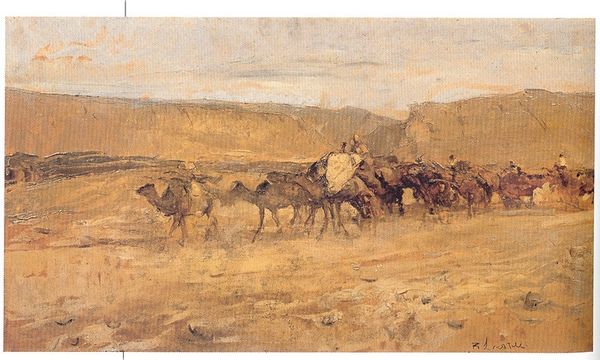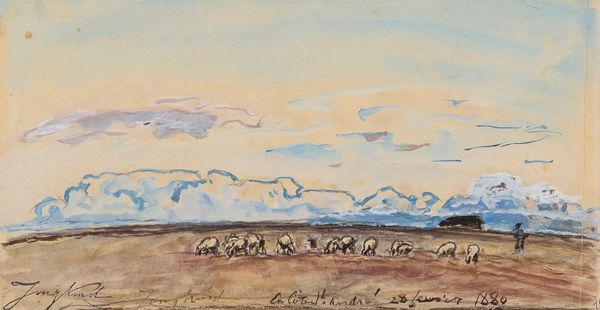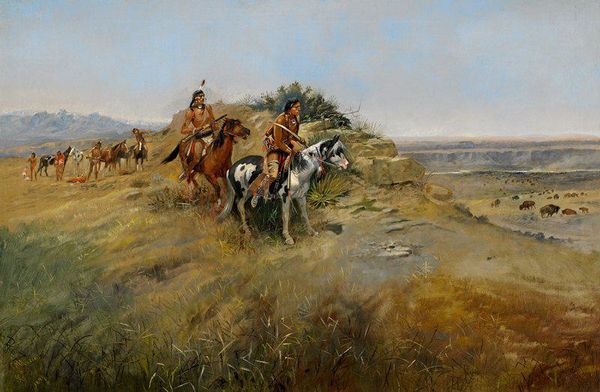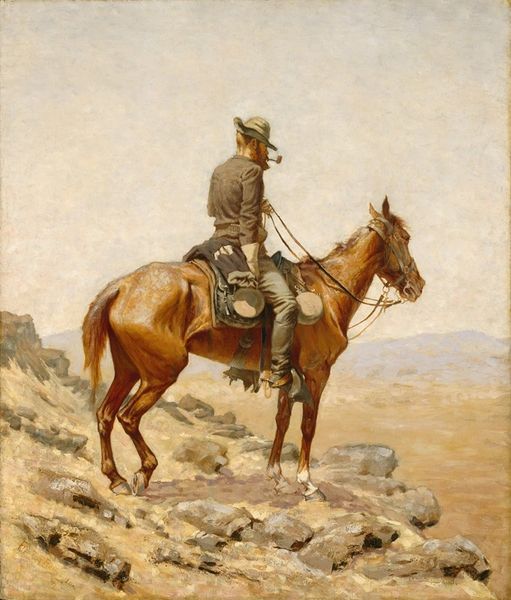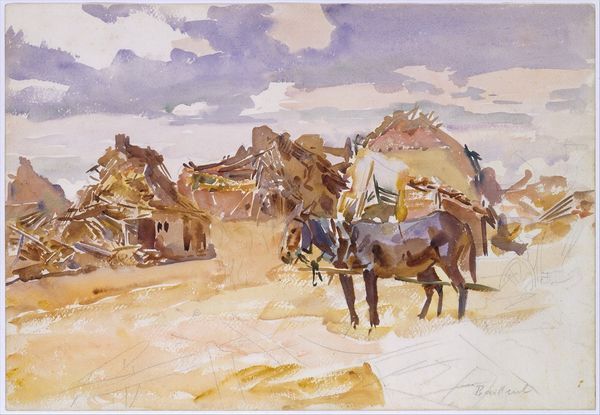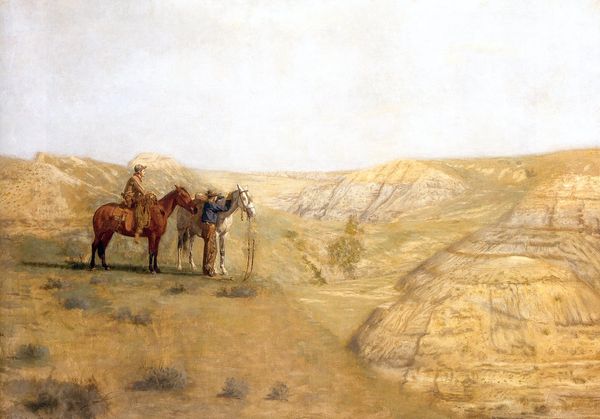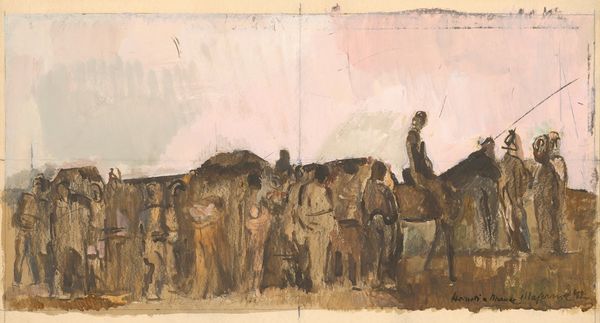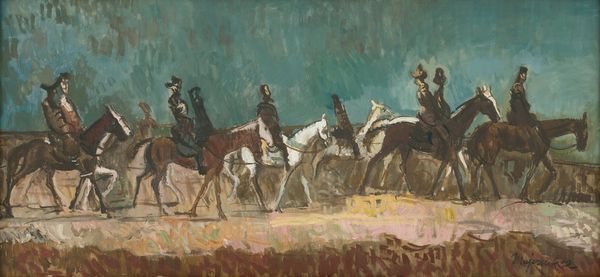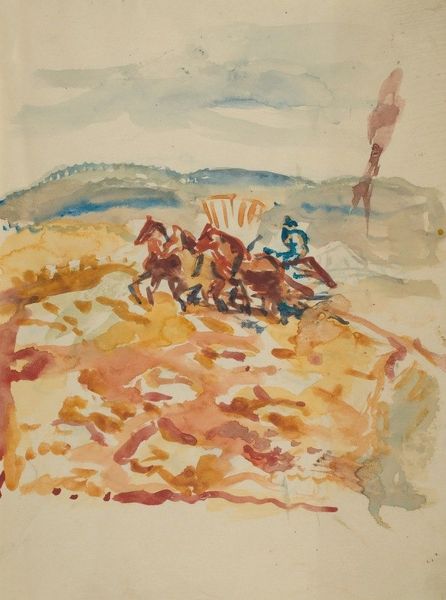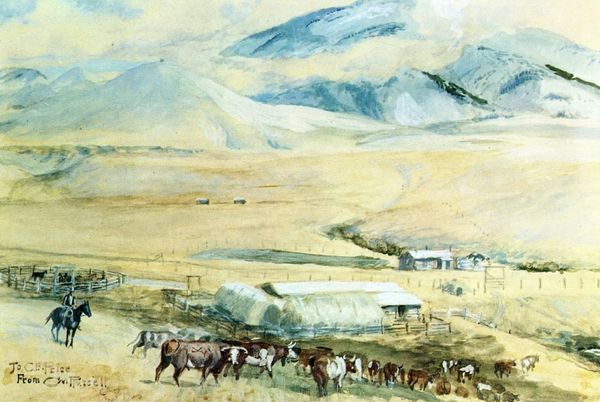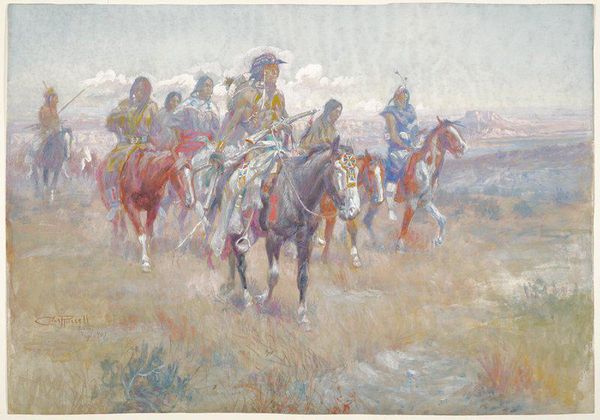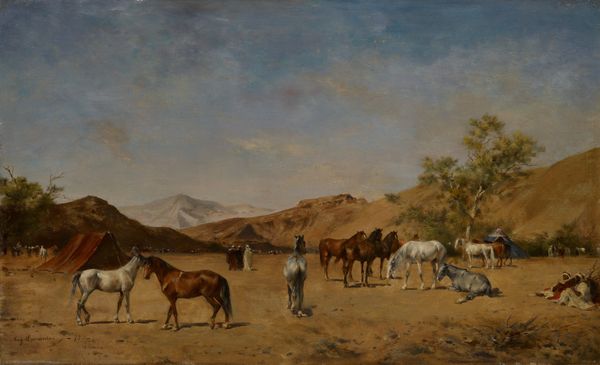
painting, oil-paint
#
portrait
#
figurative
#
painting
#
oil-paint
#
landscape
#
figuration
#
oil painting
#
orientalism
#
watercolor
#
realism
Copyright: Public Domain: Artvee
Curator: This painting, titled "Mongolian Horsemen," was completed by Alexandre Jacovleff in 1933. It's an oil on canvas, showcasing a vast, open landscape with figures on horseback. What are your first impressions? Editor: I'm immediately struck by the muted color palette; it evokes a sense of cold, harshness, and isolation. There's a real feeling of emptiness despite the presence of the horses and riders. The broad sky almost seems to swallow the land. Curator: It's fascinating you mention emptiness because, at the time Jacovleff painted this, Mongolia was undergoing significant political and social changes. The rise of Soviet influence was impacting traditional nomadic life, so perhaps that feeling you’re picking up on reflects a cultural loss being witnessed by Jacovleff, a Russian émigré himself. Editor: Absolutely. The lone figures, seemingly adrift in this landscape, certainly convey that sense of cultural displacement. Also, note the repeating symbol of the horse, both the ones being ridden and the herd grazing. The horse represents freedom, mobility, and power in nomadic cultures. Their relative freedom as opposed to the confined riders almost subverts the human dominance. Curator: That’s a great observation about the symbolism of the horse and the potential for subversion. Jacovleff’s interest in ethnography certainly played a role here. He traveled extensively and meticulously documented the cultures he encountered. The artist seems to use an orientalist style to explore both a personal landscape and document the changing society around him. Editor: And Jacovleff also emphasizes the scale of the land in contrast to the people in it, giving an uncanny sense of loneliness, doesn't it? The visual language seems carefully considered. Curator: I agree. There's an almost photographic realism to the composition combined with an ethnographic study of the attire and posture of the figures, but with those melancholic muted colors, all of the different symbolic queues come together to portray a specific view of Mongolian culture. It's a rather interesting depiction, I'd say. Editor: Agreed. It's as though he captures the essence of a culture facing external pressures while still being carried on the symbolism inherent within. Something melancholic yet subtly rebellious through pure visual syntax. Curator: Well, it’s an intricate work layered with historical context. Thank you for bringing out the visual keys; you’ve certainly enriched my appreciation of Jacovleff's "Mongolian Horsemen.” Editor: My pleasure; exploring cultural narratives through symbolism is always so interesting!
Comments
No comments
Be the first to comment and join the conversation on the ultimate creative platform.
